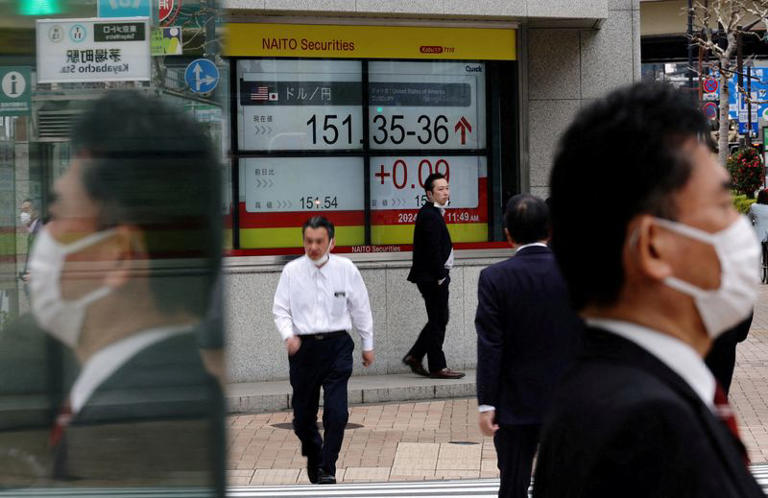On Wednesday, the Asian stock market mirrored the positive trajectory of Wall Street, enjoying a surge in response to several favorable factors. A notable catalyst was the after-hours surge in shares of Tesla, the renowned electric vehicle (EV) maker, triggered by its announcement of new models. This news, coupled with the upbeat earnings reports from select US companies, collectively lifted the overall risk sentiment in the market.
MSCI’s broadest index of Asia-Pacific shares outside Japan displayed a notable gain of 1.55%, building upon the 1% increase witnessed the previous day. This marked a significant rebound from the steep selloff observed in the market the prior week. Concurrently, Japan’s Nikkei index experienced a substantial surge of 2%, indicating a robust uptrend in investor confidence. However, the performance of China’s stocks was more mixed, with the blue-chip index remaining relatively flat, while Hong Kong’s Hang Seng Index saw a notable increase of 1.6%.
Tesla’s announcement of new electric vehicle models effectively marked the commencement of the earnings season for US tech megacaps. The subsequent 12% surge in its share price during after-hours trading underscored the market’s enthusiastic response to the news. Additionally, the positive earnings reports from companies such as General Motors contributed to the overall buoyancy in market sentiment, resulting in US stocks closing higher on Tuesday. The rise in E-mini futures for the S&P 500 index by 0.27% further reinforced this trend.
In addition to corporate earnings, market participants remained attuned to key economic indicators, notably including US gross domestic product (GDP) figures and March personal consumption expenditure data. These indicators serve as the Federal Reserve’s preferred inflation gauge and are instrumental in shaping expectations regarding the future path of US interest rates. Notably, the market is currently pricing in the expectation of a rate cut from the Federal Reserve in September, with forecasts suggesting a reduction of 43 basis points this year. This represents a significant departure from the initial projections of 150 basis points of easing for the entire year.
Following the release of data indicating a cooling of US business activity in April and a slight easing in inflation rates, Treasury yields and the US dollar experienced subdued movements on Wednesday. The yield on 10-year Treasury notes dipped marginally to 4.613%, while the dollar index, which measures the US currency against six major peers, registered a slight easing to 105.60.
Meanwhile, the Japanese yen remained near 34-year lows against the dollar, prompting concerns about potential intervention from Japanese officials. This concern was further underscored by Japanese Finance Minister Shunichi Suzuki’s warning regarding excessive yen movements. Additionally, the agreement among the United States, Japan, and South Korea to closely consult on foreign exchange markets highlighted the collaborative efforts aimed at addressing currency-related concerns.
In the realm of commodities, U.S. crude oil prices experienced a slight decline to $83.28 per barrel, while Brent crude was marginally lower at $88.31. However, it’s worth noting that oil prices had previously gained traction on Tuesday as investor focus shifted away from tensions in the Middle East. Similarly, spot gold prices witnessed a modest drop to $2,317.39 an ounce amidst the prevailing market dynamics.
